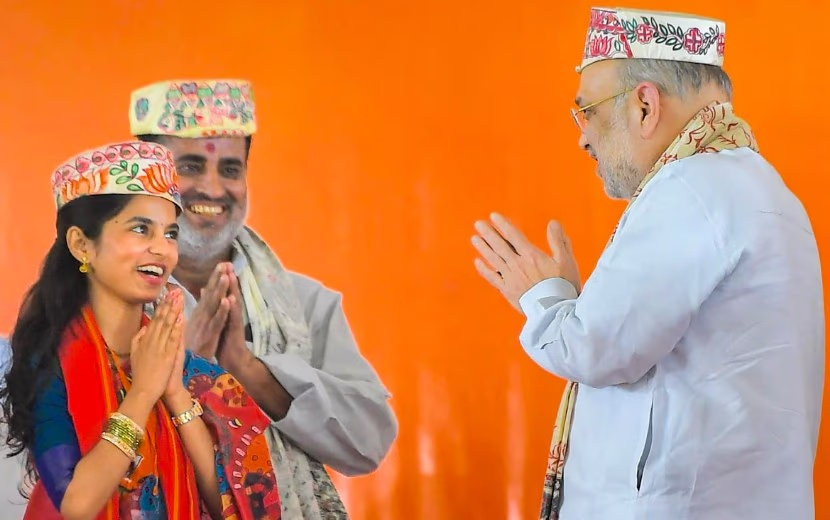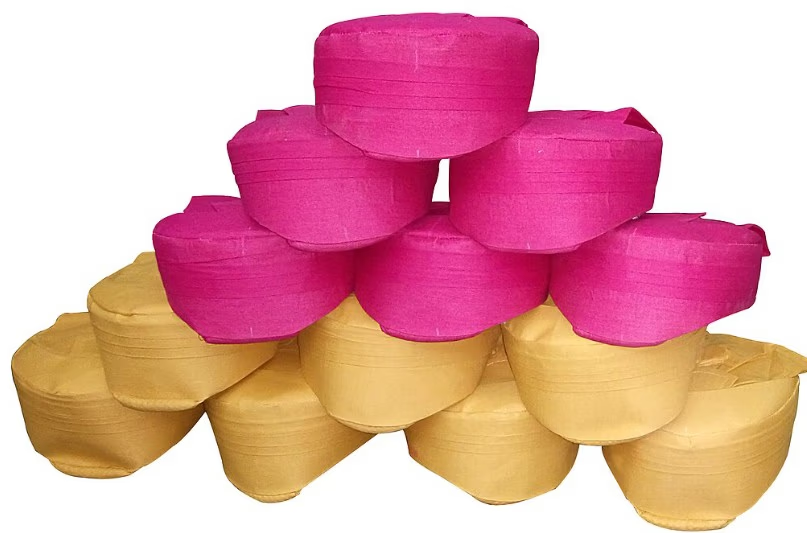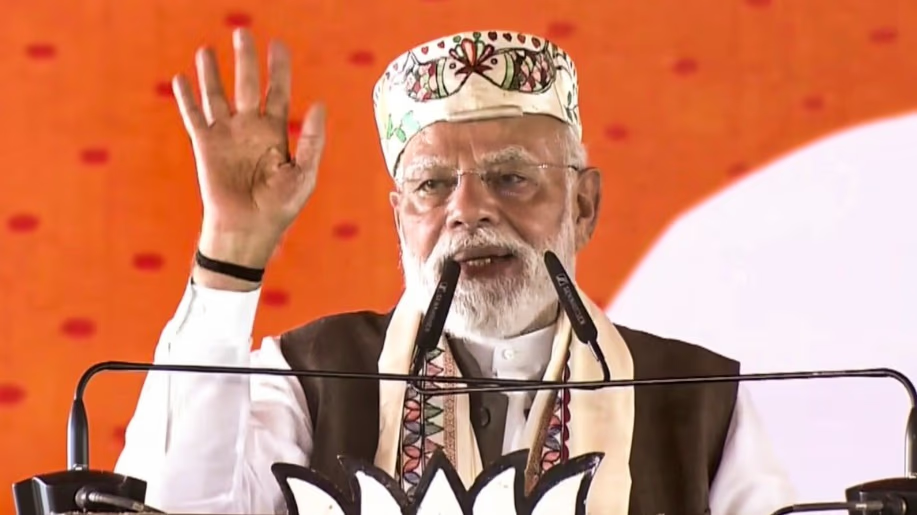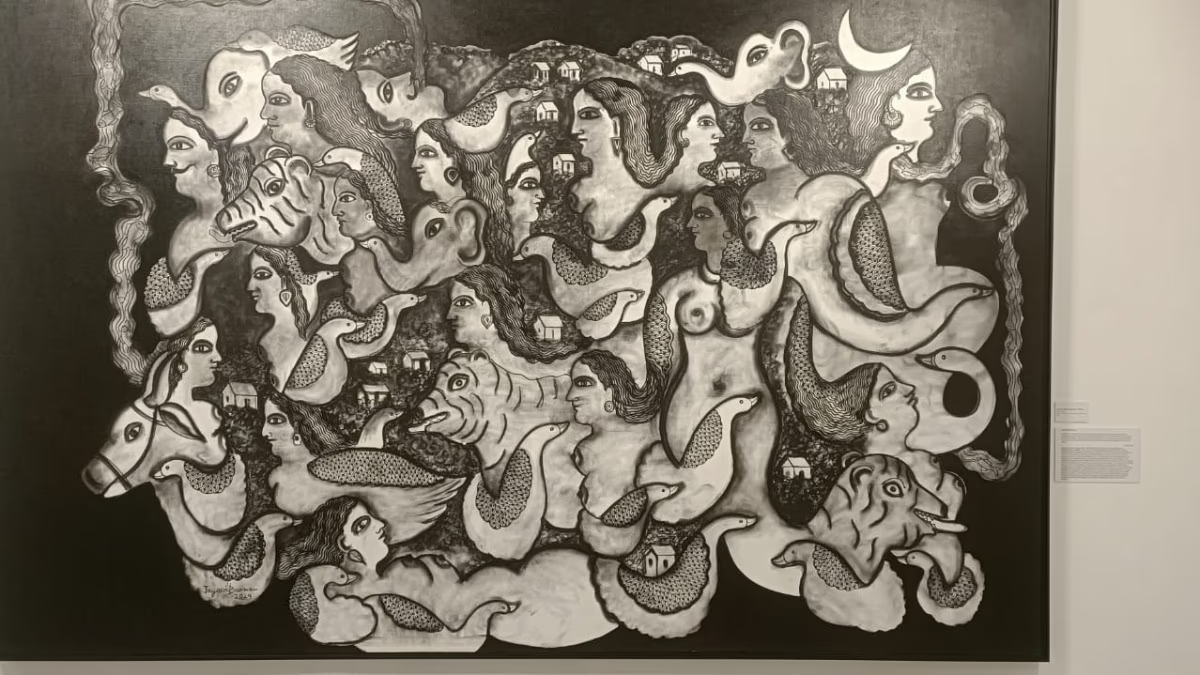Bihar is abuzz with election fever as candidates file nominations and campaign activities intensify. A unique aspect of Bihar elections is the spotlight on folk art and culture. In recent times, the 'Mithila Pag' has captured attention during the election campaigns. PM Modi, too, adorned the pag at a Samastipur rally, bringing this tradition to the fore. The Mithila Pag has been a focal point in previous assembly elections as well.
Recently, Maithili Thakur was at the center of a Pag Controversy
The NDA candidate Maithili Thakur became entangled in a dispute involving the Mithila Pag, drawing significant attention. Evidently, in Bihar, and particularly in Mithila, the 'Mithila Pag' is far more than just a piece of fabric worn on the head. It represents a rich history of civilization and culture and is acclaimed as traditional attire.
In the Maithili language, the pag is akin to the Punjabi 'pag' and the Hindi 'pagri.' In English, it's referred to as a 'turban.' Among Sikhs, this pag or pagri evolves into the larger and more elaborate dastar, which also serves as a religious emblem.
From Golden Crowns to Satin Turbans
Multiple aliases exist for pag. Historically, divine figures donned crowns, and as time progressed, earthly kings were regarded as divine representatives, making crowns fitting for their heads. The design of regal crowns evolved through stories into various shapes, styles, and eventually different metals. Crowns transitioned from gold to silver and then to amalgamated metals like alloys. With the end of regal dynasties, crowns transformed into colorful turbans decorated with gold brooches, strings of pearls, and precious stones.
For extensive coverage of the Bihar elections, click here
Detailed insights into every aspect of each Bihar assembly seat can be found here

Source: aajtak
Words like crown, cap, headcloth, headgear, hat, and helmet belong to the same category. Their shapes and construction vary with culture and occasion. Clothes typically reflect personal preference; however, headwear transcended mere fashion, evolving into a necessity and later becoming a symbol of dignity.
Pag: A Symbol of Etiquette and Respect
Turbans and pags come with their own etiquettes and rules. They not only shield the head but also adorn and manage hair. In Mithila, where women commonly cover their heads with pallus and faces with veils, it is mandatory for men to have their heads covered as well. A covered head signifies a dignified, respected personality, seamlessly connecting headwear with esteem.
Mithila's pag typically comes in three colors: red, yellow (mustard), and white.
Red Pag—
Worn by grooms at weddings; it is also donned during initiation ceremonies.
Yellow Pag—
Adorned by attendees at wedding ceremonies.
White Pag—
Worn daily by elders or respected individuals.
The Mithila Pag's Essence
In the Mithila region, spanning northern Bihar and parts of Nepal, the pag stands as a traditional headdress denoting dignity, respect, and identity. Historically made from leaves, its form has transformed over time to incorporate fabrics like cotton, silk, or satin. Despite its simplicity, the colors of the pag convey distinct meanings and importance.
The Significance of Pag Colors
Red symbolizes auspiciousness, echoing its role for grooms. Yellow signifies unity and joy, chosen for participants in wedding ceremonies and festivals. White symbolizes knowledge and wisdom.
The Distinctive Features of Mithila Pag
A remarkable aspect of the Mithila Pag is its handmade craftsmanship. The base uses paper and cardboard structures, reinforced using thin plywood. These forms are coated with paper, forming the initial layer of the pag. Subsequently, the structure is draped in fabric, creating the pag's final shape. Fine textile layers furnish the finishing touches.
The Craftsmanship of Pag
Crafting a simple pag involves a meticulous process. For special events or guests, pag is adorned with Mithila paintings. Velvet pag, embellished with golden satin, zari work, pearl strings, and plumes, are crafted for adding splendor.

Source: aajtak
Impact on Artisans
Crafting a pag takes 45 minutes to two hours, including adornment. The slow production means artisans often earn modestly. A basic pag costs between 50 to 60 rupees, decorative pag ranges from 70 to 90 rupees, Mithila painted pag sells for 80 to 90 rupees, and a velvet pag with trimmings can reach up to 120, 150 or 200 rupees, based on local negotiations. Hence, despite gaining election-time attention, pag artisans do not see significant financial benefits.
Pag: Honored with a Postal Stamp
In recent years, initiatives like the 'Save the Pag Campaign' have sparked cultural revitalization through public rallies and awareness drives. In 2017, India Post honored the Mithila Pag's heritage with a commemorative postal stamp. Today, designers reinterpret these traditional pags, keeping them light, simple, yet deeply rooted in tradition. They remain a vibrant thread linking past and present, evident during weddings, festivals, and cultural events.




